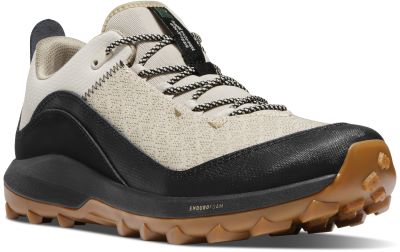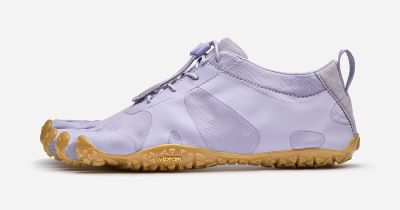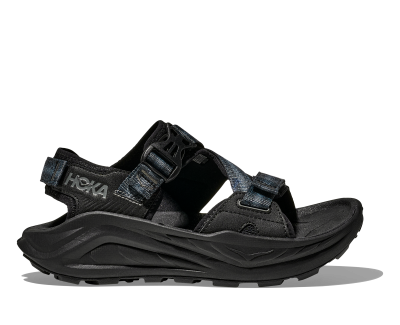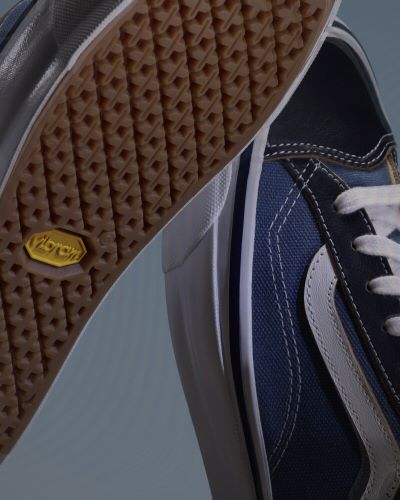With its recent loafer collaboration with Hoka and the FiveFingers renaissance in the fashion world, Italian footwear and sole maker Vibram has been raising a lot of eyebrows, especially in the outdoor industry.
But according to Fabrizio Gamberini, Vibram’s North America president and global chief brand officer, the controversial Speed Loafer by Hoka, with its preppy tassels, thick Speedgoat 5 midsole, and Vibram Megagrip outsole is simply a great illustration of how brands rooted in outdoor recreation can expand their horizons.
“While transitioning from fashion to outdoor is challenging, we’ve seen many brands successfully move from outdoor into fashion – and the Hoka loafer is a perfect example of that,” Gamberini said. “It was well-executed and reflects a broader consumer trend. Our focus remains on delivering performance without compromising the values that have made Vibram trusted in the outdoor community.”
It also completely sold out. Tapping into the fashion community, intensifying its connection with consumers in the post-COVID era, product innovation, and generating consumer demand have all fueled Vibram’s growth, Gamberini said. And that work has paid off. Over the past four years, its U.S. business has doubled.
“Consumers are not just noticing Vibram’s quality – they are actively requesting it from their favorite brands, which has strengthened our collaborations.”
“The Vibram name and logo is synonymous with quality and performance, but that often means there is a price premium,” said Kevin Leffler, the owner of Appalachian Outfitters in Peninsula, Ohio. That means consumers shopping on the lower price range don’t expect a Vibram sole.

Danner’s N45 with Vibram outsole with MegaGrip technology ($200). Photo courtesy of Vibram.
“However, as we move towards more premium footwear with higher price points, I find that having a Vibram sole becomes a more important factor,” he said. “In fact, after a certain price point, I would even go as far to say that a Vibram sole is almost an expectation.” Nearly all customers will choose a pair of shoes with a Vibram sole over a pair without because of the brand’s reputation, he said.
“The Vibram sole makes a product way more appealing to a customer than not having it,” agreed Alex O’Malley of Sam’s Outdoor Outfitters in Keene, New Hampshire, and Hadley, Massachusetts. “They hold up well and you can trust them to not fall apart on you.”
Brand Partnerships
The FiveFingers five-toed barefoot shoe, launched in 2006, was conceived by mountaineer Robert Fliri, who tragically died just recently while descending the Punta d’Oberettes ice wall in the Italian Alps. It is the only footwear Vibram makes on its own, but its high-fashion collaborations with brands such as Suicoke, Kiko Kostadinov, and Al Morán’s OTTO 958 propelled them back into popularity over the past year, this time in the world of style. Vogue magazine declared in January that the “freaky shoe” is going to be seen everywhere in 2025.

Vibram’s FiveFingers V-Alpha in lilac ($140). Photo courtesy of Vibram.
“While we find the renewed interest from fashion intriguing, our core focus for VFF remains on outdoor performance and training,” Gamberini said. “This product has always had a clear purpose, and our community continues to champion it.”
Partnerships, and providing reliable, durable, grippy soles with their recognizable yellow logo to brands such as Nike, Vans, Merrell, Arc’teryx, Diadora, and more, make up the bulk of Vibram’s business. Those partnerships remain Vibram’s main focus, Gamberini said.
Consumers play a pivotal role in Vibram’s partnership strategy, he said.
“They actively request and even demand Vibram technology in the products they love,” he said.
The process of finding new partners involves three key steps, he said. First, the brand clearly communicates the benefits of its soles, which include everything from traction to lightweight to durability, depending on the purpose and design of the shoe.
It then evaluates opportunities in certain segments, which now include outdoor, work and safety, lifestyle, and indoor footwear. Importantly, despite how ubiquitous the soles can seem in certain parts of the world, Gamberini said Vibram declines collaboration opportunities as frequently as it says yes.
“Our approach is based on precise segmentation, and we evaluate each opportunity through the lens of brand presence, values, consumer alignment, and distribution strategy,” he said. “Vibram is a brand deeply loved by consumers, and we are committed to preserving its integrity. We will not allow anyone to dilute or overuse it.”
Thirdly, Vibram amplifies its partners’ messaging without taking over the narrative, Gamberini said.
“We are here to enhance their story, not create it for them,” he said.
The Design Process
Vibram Senior Designer Jacob Baldry, who is based in Portland, Oregon, said the Vibram logo gives consumers confidence to tackle any kind of terrain.
“It means every shoe or boot has passed our rigorous design and testing standards,” Baldry said. “Once you learn about Vibram, you’ll be at the store flipping over every shoe on the wall checking for the yellow logo. In my mind, it’s the seal of approval for all things grip, traction, and durability.”

The Hoka Hike Infini TC ($140). Photo courtesy of Vibram.
Some clients come to Vibram with a clear sense of what they want, and others bring inspiration or a problem they want to solve. The Carrarmato sole, designed in 1937, was the first rubber sole designed for mountaineering. Over the course of its 90 years in business, Vibram has developed hundreds of soles spanning activities such as trail running, hiking, snowboarding, skating, work, and lifestyle, he said.
Many, if not most, soles Vibram designs are specific to brand partners and each piece of footwear’s performance requirements. The biggest trend right now is balancing maximum traction with minimal weight, he said.
“Companies are racing to minimize weight but know that their athletes and consumers still expect the confidence that comes with a Vibram sole,” Baldry said. That demand gave birth to Vibram’s Litebase technology, a construction method that has full rubber coverage on the bottom of the shoe, but with a reduced sole thickness.
The Megagrip Elite is Vibram’s latest innovation, which was developed specifically for trail running. Vibram’s Megagrip compound was designed for wet-terrain traction, and the Megagrip Elite works in both wet and dry conditions and functions year-round.
“It’s just beginning to hit the trails on the most elite footwear,” Baldry said. “Early results are promising, including podium finishes by our tester team.”
Future Outlook
Vibram hosted its first pop-up at Paris Fashion Week in January, and attendance at the space exceeded the brand’s expectations.

The Vans OTW Old Skool 36 ($120). Photo courtesy of Vibram.
“It was an important step in extending our narrative beyond performance into the broader lifestyle and fashion arenas,” Gamberini said.
The U.S. remains Vibram’s largest revenue generator and will continue to be for the foreseeable future, he said. But Vibram is underrepresented in China, and Australia and Japan also present interesting opportunities he said.
As far as brand partnerships, Vibram has more to come.
“We are excited about what lies ahead,” Gamberini said. “The groundwork we’ve laid over the past few years is now bearing incredible fruit, and 2025 will showcase some remarkable collaborations that further elevate the Vibram brand.”
Kate Robertson can be reached at kate@shop-eat-surf-outdoor.com.






